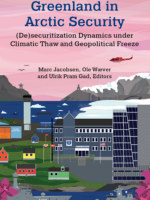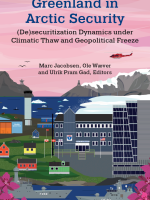Indigenous peoples and green NGOs are surprisingly uneasy allies in the Arctic
There is a certain register of self-representation in which actors and fora present themselves as Arctic by talking about a pristine natural environment inhabited by fragile but resourceful human communities. Both ecosystems and communities are threatened by invasive pollution and climate change, but communities are simultaneously threatened by a lack of sustainable development sometimes explained by neglect from faraway metropoles.
Discussed as security problems, they are also frequently analyzed in security terms. Analyses, however, are often designed in an unnecessarily static manner that points attention away from important dynamics core to Arctic security.
In this book chapter, the authors argue that while Arctic regionalization might have taken off from environmental concerns, what has shaped both the security dynamics playing out as a central part of Arctic region building is the way securitizations of ‘environmental’ referent objects have interacted with securitizations centered on identities.
The argument is that we will better understand Arctic security by going ‘back to basics’ and starting security analysis from scratch, by first identifying individual securitizing moves and only then aggregating patterns of security dynamics. Moreover, such an analysis will better equip us to judge whether the identity/environment nexus found is distinctly Arctic or may be found elsewhere, even if possibly less dominating for the overall security dynamics of a region and, certainly, globally.
The chapter suggests that to pinpoint Arctic qualities, security applicants of CSST one needs to do two things: First, get the relation that the theory conceptualizes between ‘sectors’ and security dynamics right. Second, refocus from snapshots of static security configurations to dynamic security ‘trans-figurations’, that is, to follow how one configuration over time morphs into a related but distinct configuration as securitizing actors change how they talk about referent objects, threats, and means as reactions to opponents in the region or developments elsewhere.
To make this methodological point, the chapter performs a detailed analysis zooming in on two distinct security configurations that take on special qualities in the Arctic, namely one on wildlife hunting and one on climate change. The point of the analysis, however, comes from following how the two configurations are related over time, the latter configuration relating back to the earlier.
- Natural resources and environment
- Land rights and investments
- Climate change and environment
- Oil, gas and minerals
- Maritime security
- Development policy
- Inequality and poverty
- Development in practice
- Danish and European foreign policies
- EU External Relations
- Diplomacy and international organisations
- Global economy
- Global economic governance
DIIS Experts



